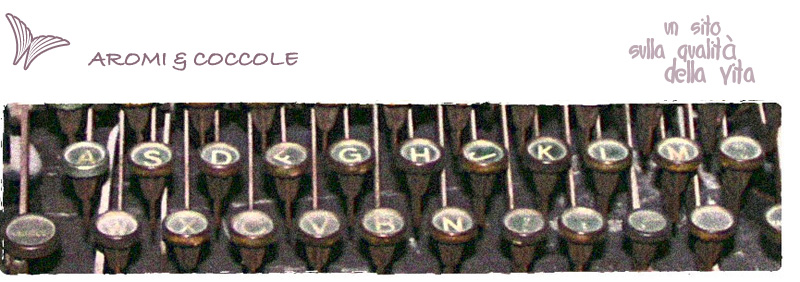Parole
Per i lettori
Questo spazio è un contenitore da arricchire insieme. Ben venga il vostro apporto sui temi dello star bene

- Australia
- Wellcome
- About me
- Aromi
- Coccole
- Qigong – Chikung
- Shiatsu – Do
- reiki mon amour
- Vivere con Gioia
- La nostra vita è un’impresa. Giochiamo a sanarla con la M.T.C.
- Convertirsi al sorriso di Dio
- Grace
- Alimentacionmedicina
- Eutonia: tecnica de reeducaciòn postural
- Dien Chan: Riflessologia facciale vietnamita
- BIOENERGETICA, lo sguardo sulle emozioni
- medicina tradizionale cinese : l’origine e la saggezza
- Meditazione è trasformazione
- MEDITAZIONE DEI CHAKRA
- Tao e Shiatsu: l’arte del fluire
- Bellezza e benessere nell’antico Egitto
- Chakras, i nostri vortici energetici. Coccoliamoli
- Uruguay
- Parole
- Eventi
- Baratto di talenti
- Contatti e Links
Aromi&Coccole 2009 - info@aromiecoccole.it
Curiosities from the Globe
The way we lie : how to spot a lier
A lifetime of relationships is inconceivable without deception. Deception comes naturally to all living things. Birds do it by feigning injury to lead hungry predators away from their nest. Spider crabs do it by disguise : adorning themselves with strips of kelp and other debris, they pretend to be something they are not and so escape their enemies. Most human lies are told simply to avoid trouble according to social convention. In most cases the lies are harmless. Men lie roughtly 20% more often than women but women are better at it. The difference between male and female mendacity is qualitative rather than quantitative. “Women lie more readily (in social situations) than men because they are more sensitive (why hurt another person with the truth when a polite lie could boost their ego ?) A resercher says :”We don’t think before we feel. Expressions tend to show up on the face before we are even conscious of experiencing an emotion”. One of the most difficult facial expressions to fake or conceal, if it is genuinely felt, is sadness. The smile, on the other hand, is one of the easiest facial expressions to counterfeit (false smiles so strained and stiff). The way of lying is strictly connected to cultural differences. For example, the lack of eye contact of a man from Asia should be interpreted as a sign of deference and respect, not deception. In the western culture, generally, when we lie we avoid to look into the other’s eye (this is not a sign of respect but a sign of deceit). Before judging someone a liar, you must first know that person’s normal behaviour patterns and other explanations, such as cultural differences. The Japanese feel very uncomfortable when lying. In Russia people seldom seem to say what they really feel. When we lie, we exibit all sorts of facial tics and nervous mannerism that we reveal just how unconfortable we are with what we are telling. There are signs that may indicate deception such as shrugging shoulders, scratching the nose, tapping the foot or twisting the hair. These are signs that indicate nervousness and may be interpreted as an attempt to conceal emotions linked to lie telling. Scientists at the Salk Institute in California have developed a computer system that has learned to read the rapidly changing expressions in a human face. In the 1970s some resarchers at the University of California developed a classification of 46 muscle movements of human facial expressions. The scientists plan to expand the computer’s recognition skills by teaching it to identify all of the 46 muscle actions. The research could lead to a lie detector more reliable which measures reactions like heartbeat and perspiration that clever subjects can control. It would spot in an instant any facial movement that indicates a conflicting emotion. Luckily, nature provides more than enough clues to trap dissemblers if you know where to look. By closely observing facial expressions, body language and tone of voice, practically anyone can recognize the telltale signs of lying. In order to know what kind of lies work best, successful liars need to accurately assess other people’s emotional states. The emotional state to watch out for is stress, the conflict most liars feel between the truth and what they actually say and do (respiration, heart rate and skin conductivity tend to increase when people are nervous, as they usually are when lying). According to the statement of some researchers verbal and nonverbal clues suggest someone might be lying. Those clues are written all over the face. Neurological studies even suggest that genuine emotions travel different pathways through the brain than insincere ones.
From a student’s team research during a summer camp – Stolberg 2000